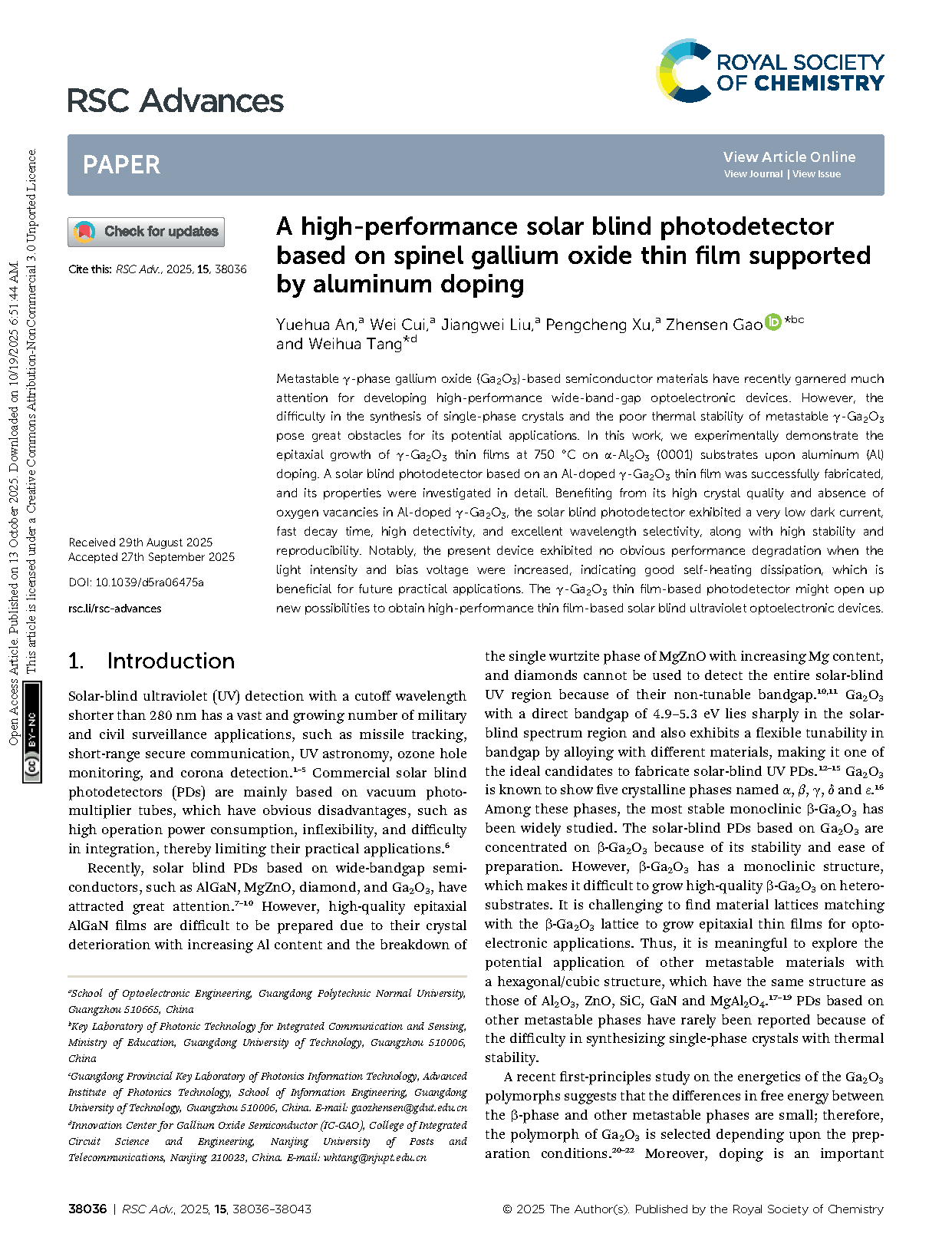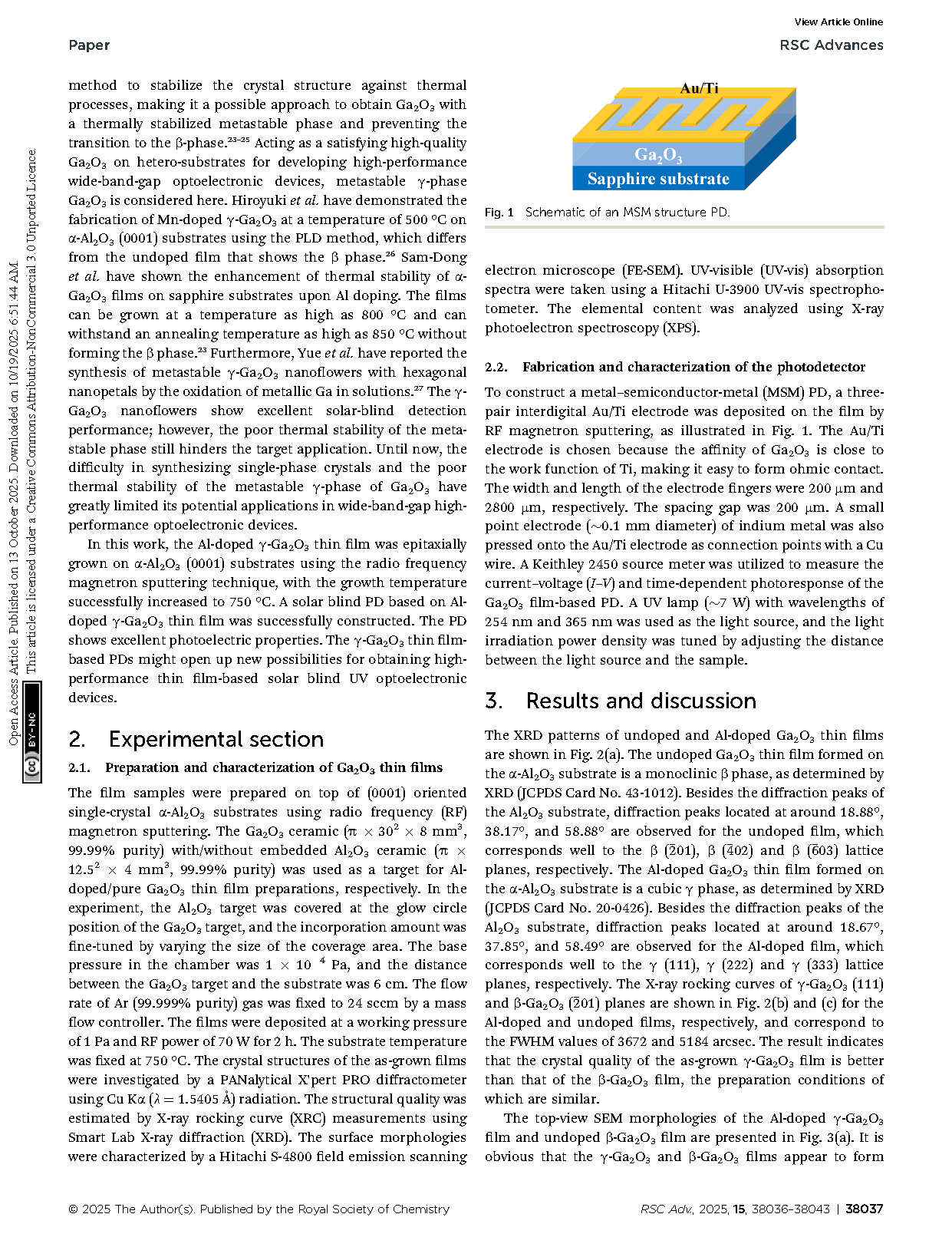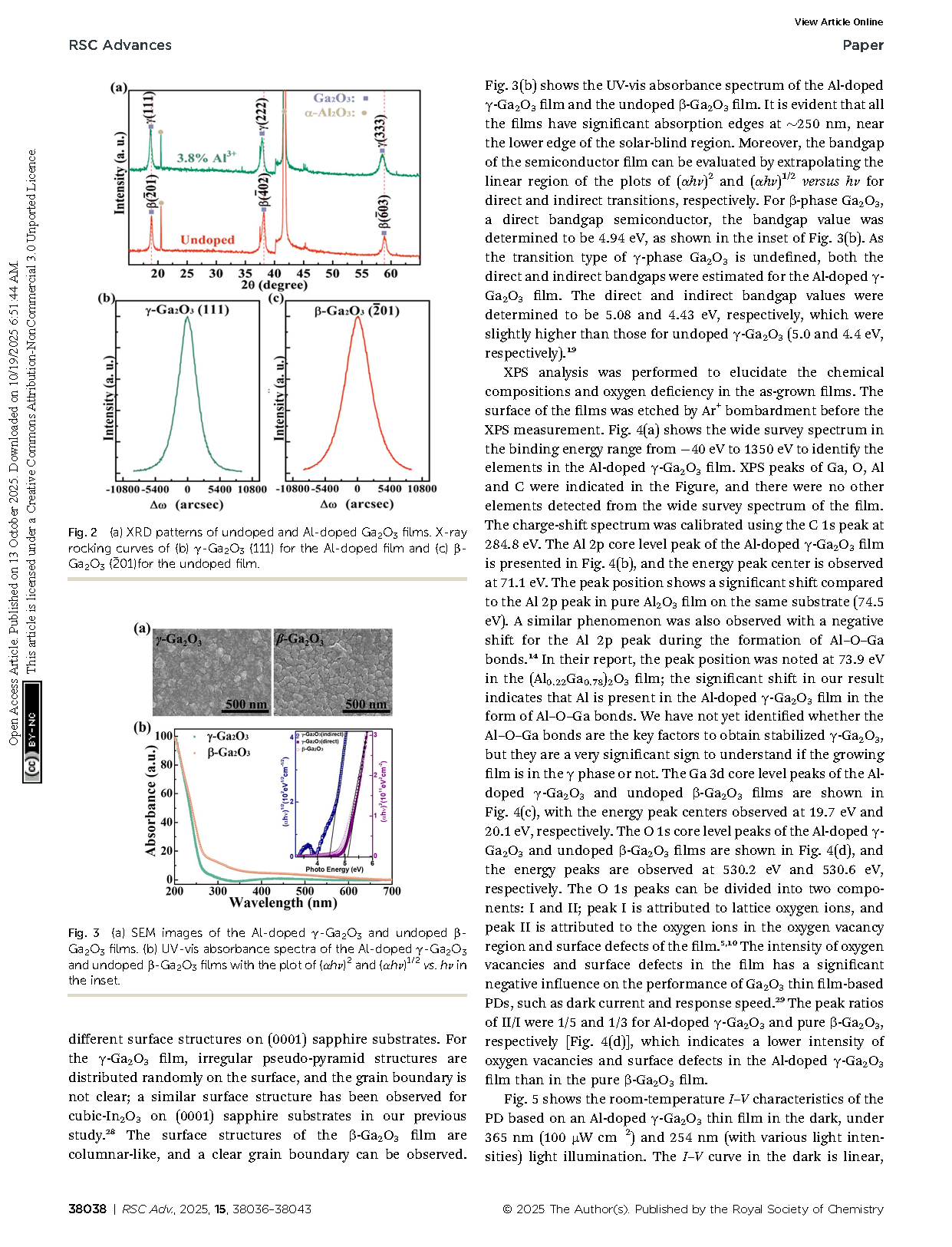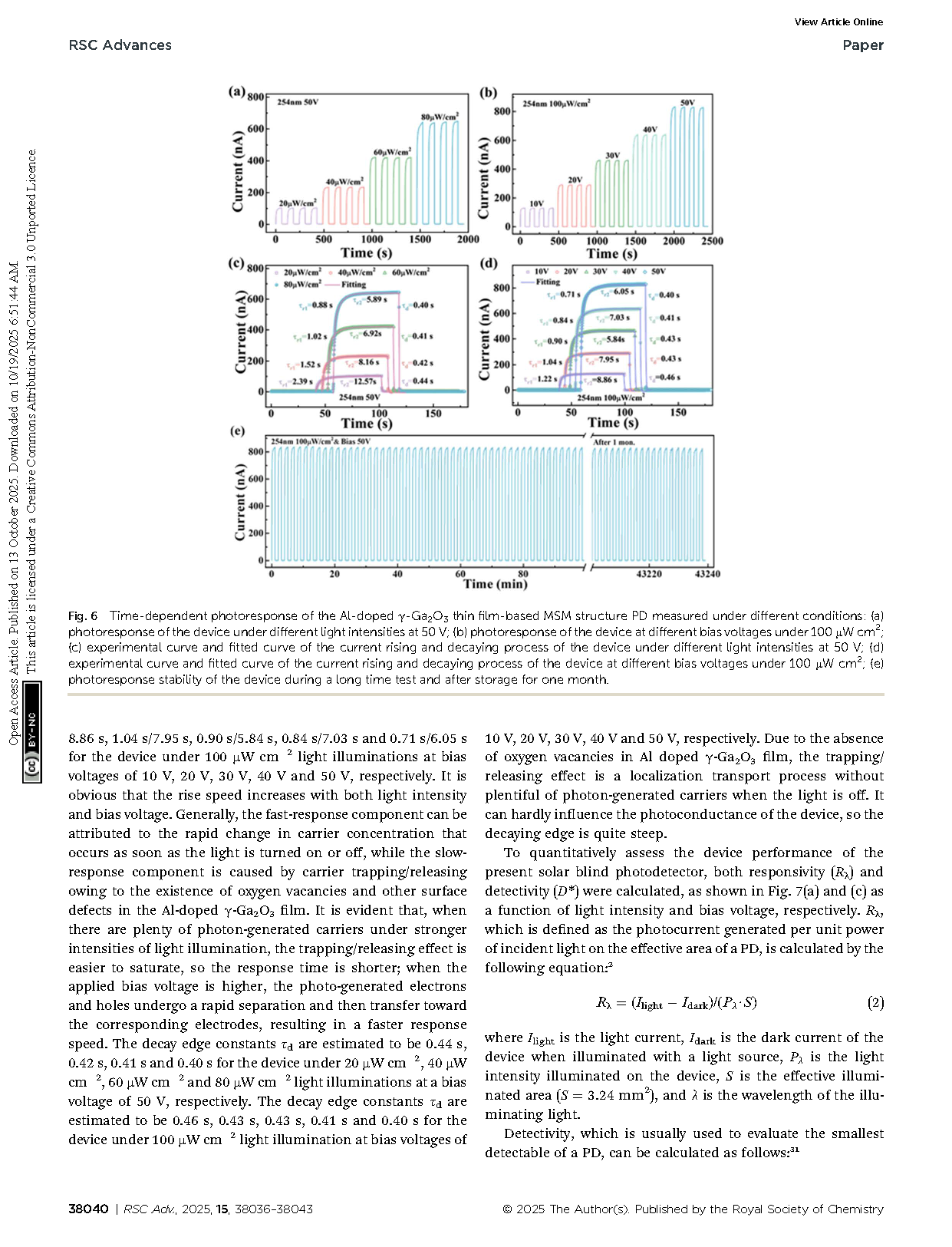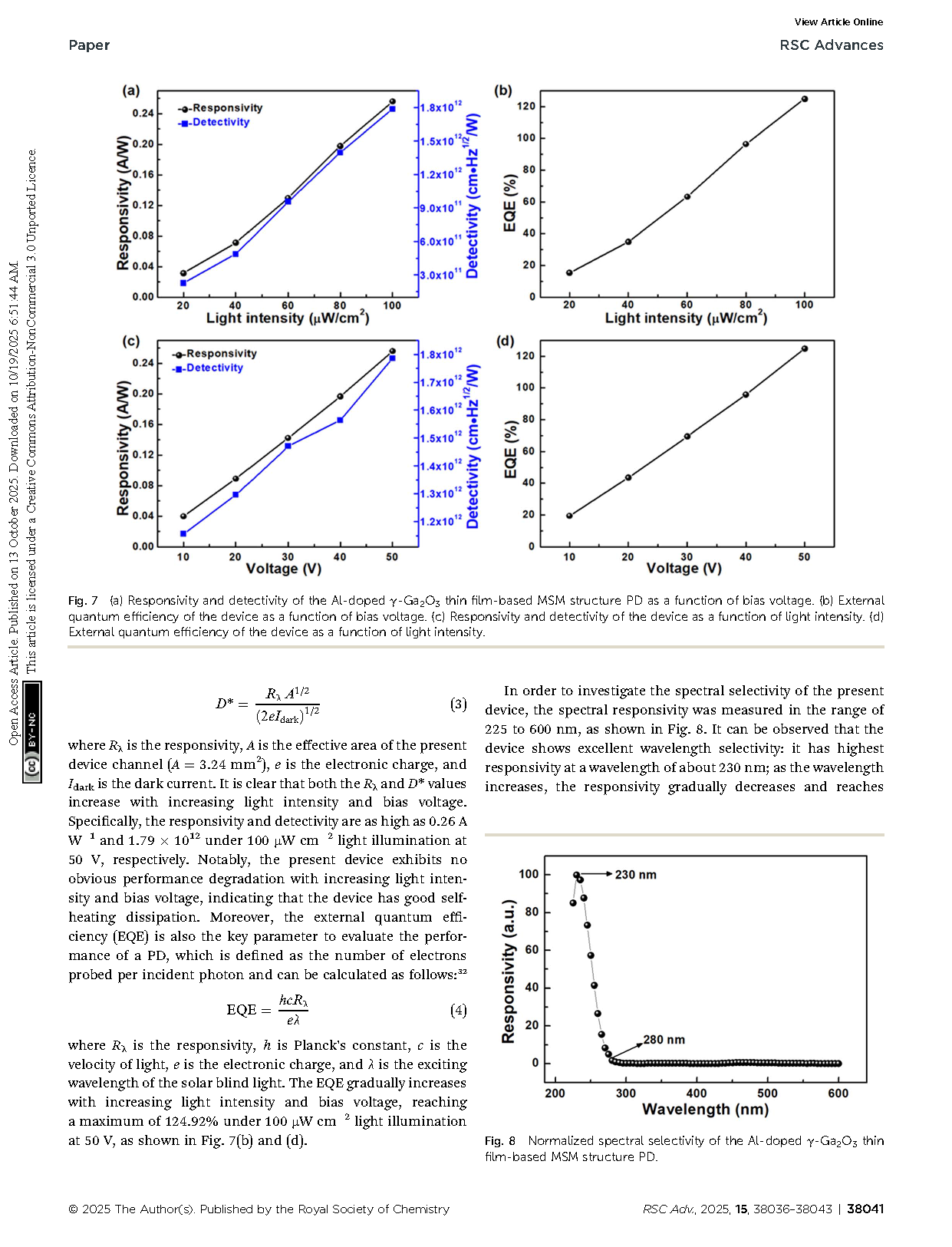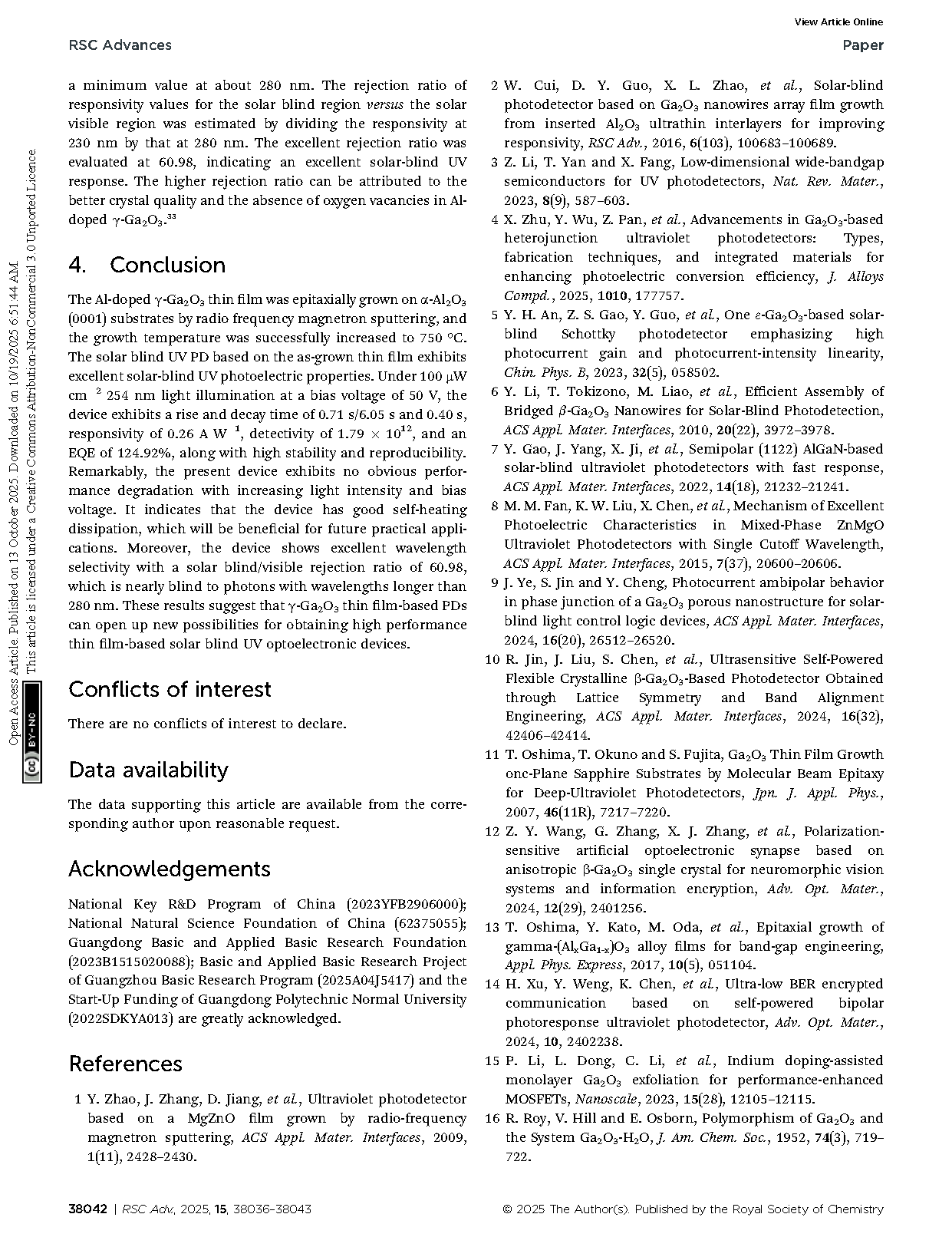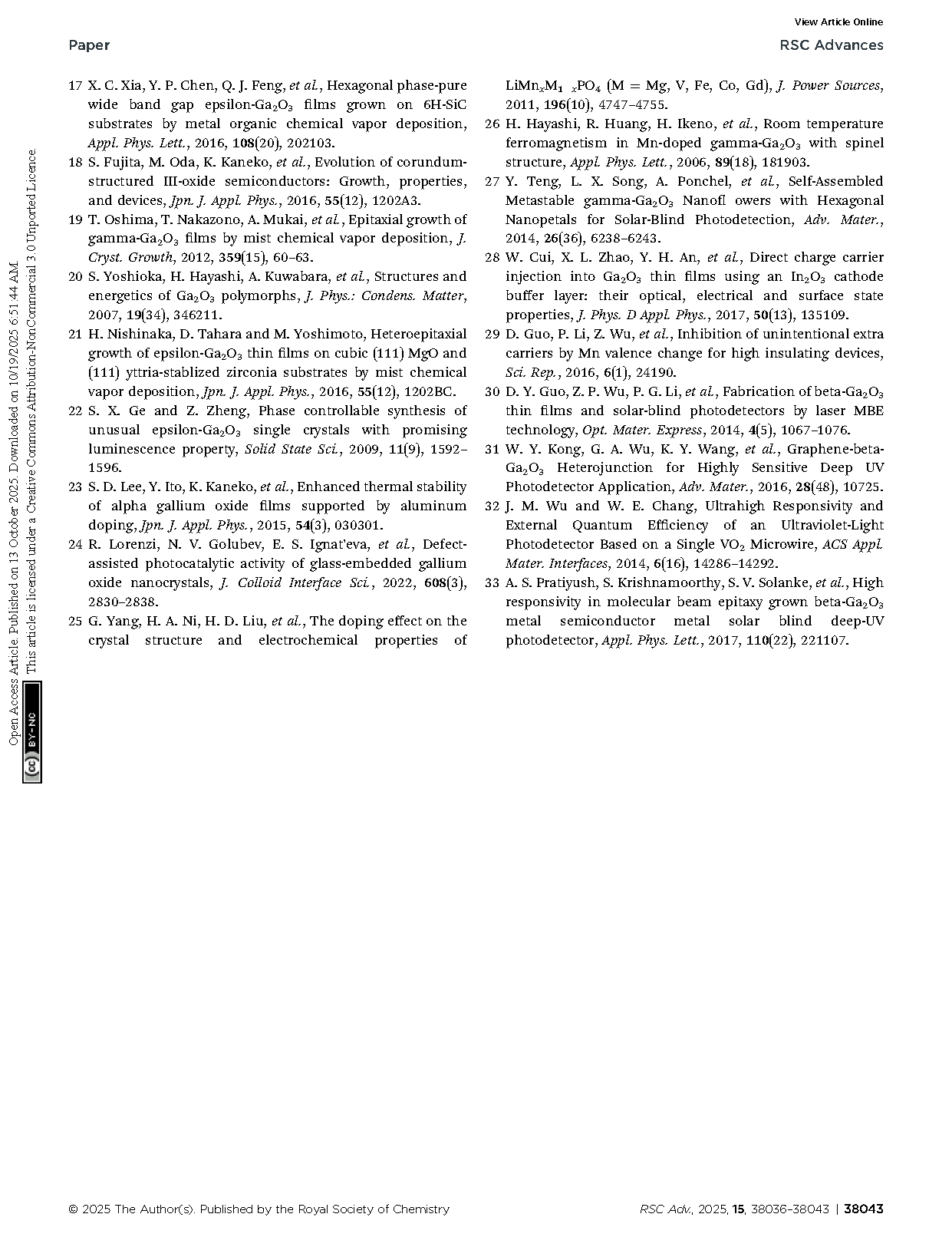

【Domestic Papers】A high-performance solar blind photodetector based on spinel gallium oxide thin film supported by aluminum doping
日期:2025-11-06阅读:142
Researchers from the Guangdong Polytechnic Normal University have published a dissertation titled "A high-performance solar blind photodetector based on spinel gallium oxide thin film supported by aluminum doping" in RSC Advances.
Project Support
National Key R&D Program of China (2023YFB2906000); National Natural Science Foundation of China (62375055); Guangdong Basic and Applied Basic Research Foundation (2023B1515020088); Basic and Applied Basic Research Project of Guangzhou Basic Research Program (2025A04J5417) and the Start-Up Funding of Guangdong Polytechnic Normal University (2022SDKYA013) are greatly acknowledged.
Background
Solar-blind ultraviolet (UV) detection with a cutoff wavelength shorter than 280 nm has a vast and growing number of military and civil surveillance applications, such as missile tracking, short-range secure communication, UV astronomy, ozone hole monitoring, and corona detection. Commercial solar blind photodetectors (PDs) are mainly based on vacuum photomultiplier tubes, which have obvious disadvantages, such as high operation power consumption, inflexibility, and difficulty in integration, thereby limiting their practical applications.
Recently, solar blind PDs based on wide-bandgap semiconductors, such as AlGaN, MgZnO, diamond, and Ga2O3, have attracted great attention. However, high-quality epitaxial AlGaN films are difficult to be prepared due to their crystal deterioration with increasing Al content and the breakdown of the single wurtzite phase of MgZnO with increasing Mg content, and diamonds cannot be used to detect the entire solar-blind UV region because of their non-tunable bandgap. Ga2O3 with a direct bandgap of 4.9–5.3 eV lies sharply in the solar-blind spectrum region and also exhibits a flexible tunability in bandgap by alloying with different materials, making it one of the ideal candidates to fabricate solar-blind UV PDs.
Abstract
Metastable γ-phase gallium oxide (Ga2O3)-based semiconductor materials have recently garnered much attention for developing high-performance wide-band-gap optoelectronic devices. However, the difficulty in the synthesis of single-phase crystals and the poor thermal stability of metastable γ-Ga2O3 pose great obstacles for its potential applications. In this work, we experimentally demonstrate the epitaxial growth of γ-Ga2O3 thin films at 750 °C on α-Al2O3 (0001) substrates upon aluminum (Al) doping. A solar blind photodetector based on an Al-doped γ-Ga2O3 thin film was successfully fabricated, and its properties were investigated in detail. Benefiting from its high crystal quality and absence of oxygen vacancies in Al-doped γ-Ga2O3, the solar blind photodetector exhibited a very low dark current, fast decay time, high detectivity, and excellent wavelength selectivity, along with high stability and reproducibility. Notably, the present device exhibited no obvious performance degradation when the light intensity and bias voltage were increased, indicating good self-heating dissipation, which is beneficial for future practical applications. The γ-Ga2O3 thin film-based photodetector might open up new possibilities to obtain high-performance thin film-based solar blind ultraviolet optoelectronic devices.
Conclusion
The Al-doped γ-Ga2O3 thin film was epitaxially grown on α-Al2O3 (0001) substrates by radio frequency magnetron sputtering, and the growth temperature was successfully increased to 750 °C. The solar blind UV PD based on the as-grown thin film exhibits excellent solar-blind UV photoelectric properties. Under 100 μW cm−2 254 nm light illumination at a bias voltage of 50 V, the device exhibits a rise and decay time of 0.71 s/6.05 s and 0.40 s, responsivity of 0.26 A W−1, detectivity of 1.79 × 1012, and an EQE of 124.92%, along with high stability and reproducibility. Remarkably, the present device exhibits no obvious performance degradation with increasing light intensity and bias voltage. It indicates that the device has good self-heating dissipation, which will be beneficial for future practical applications. Moreover, the device shows excellent wavelength selectivity with a solar blind/visible rejection ratio of 60.98, which is nearly blind to photons with wavelengths longer than 280 nm. These results suggest that γ-Ga2O3 thin film-based PDs can open up new possibilities for obtaining high performance thin film-based solar blind UV optoelectronic devices.

Fig. 1 Schematic of an MSM structure PD.
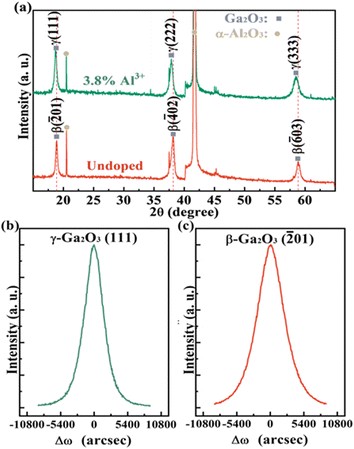
Fig. 2 (a) XRD patterns of undoped and Al-doped Ga2O3 films. X-ray rocking curves of (b) γ-Ga2O3 (111) for the Al-doped film and (c) β-Ga2O3 (-201)for the undoped film.
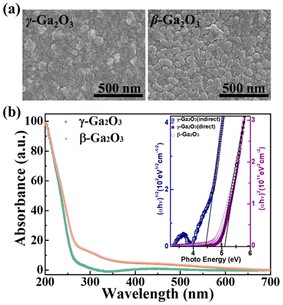
Fig. 3 (a) SEM images of the Al-doped γ-Ga2O3 and undoped β-Ga2O3 films. (b) UV-vis absorbance spectra of the Al-doped γ-Ga2O3 and undoped β-Ga2O3 films with the plot of (αhν)2 and (αhν)1/2vs. hν in the inset.
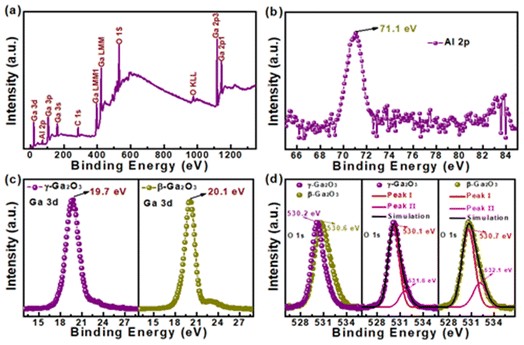
Fig. 4 (a) XPS wide survey spectrum and (b) core level of Al 2p for the Al-doped γ-Ga2O3 film. Core levels of (c) Ga 3d and (d) O 1s for Al-doped γ-Ga2O3 and undoped β-Ga2O3 films.
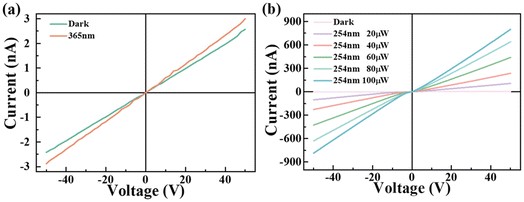
Fig. 5 (a) I–V characteristics of the Al-doped γ-Ga2O3 thin film-based MSM structure PD in the dark and under a 365 nm light illumination. (b) I–V characteristics of the device in the dark and under a 254 nm light illumination with various light intensities.
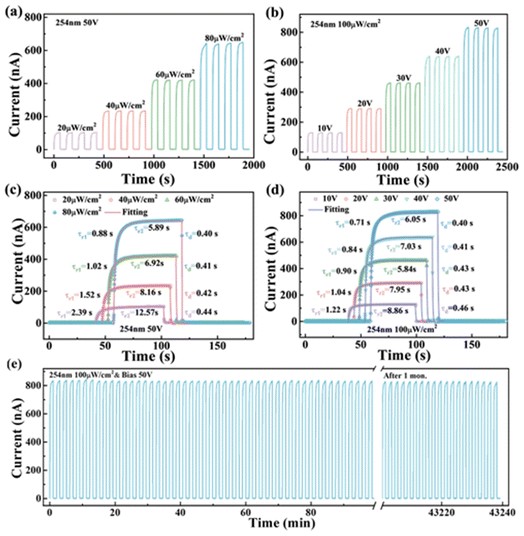
Fig. 6 Time-dependent photoresponse of the Al-doped γ-Ga2O3 thin film-based MSM structure PD measured under different conditions: (a) photoresponse of the device under different light intensities at 50 V; (b) photoresponse of the device at different bias voltages under 100 μW cm2; (c) experimental curve and fitted curve of the current rising and decaying process of the device under different light intensities at 50 V; (d) experimental curve and fitted curve of the current rising and decaying process of the device at different bias voltages under 100 μW cm2; (e) photoresponse stability of the device during a long time test and after storage for one month.
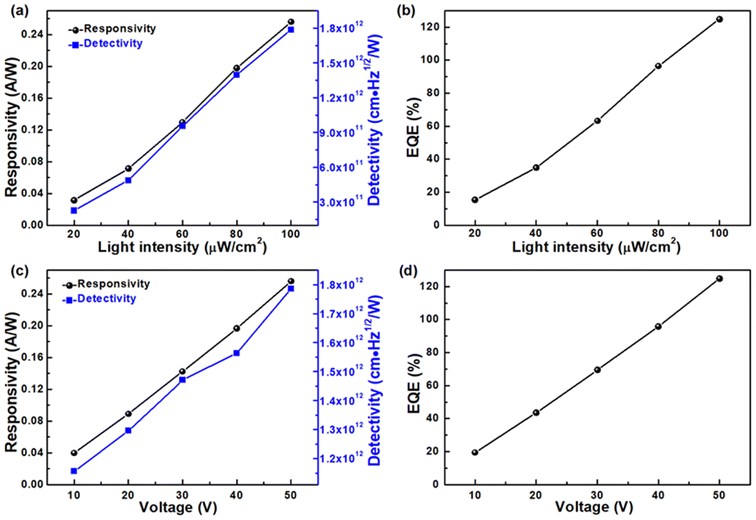
Fig. 7 (a) Responsivity and detectivity of the Al-doped γ-Ga2O3 thin film-based MSM structure PD as a function of bias voltage. (b) External quantum efficiency of the device as a function of bias voltage. (c) Responsivity and detectivity of the device as a function of light intensity. (d) External quantum efficiency of the device as a function of light intensity.
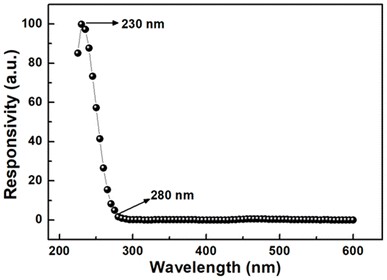
Fig. 8 Normalized spectral selectivity of the Al-doped γ-Ga2O3 thin film-based MSM structure PD.
DOI:
doi.org/10.1039/D5RA06475A
